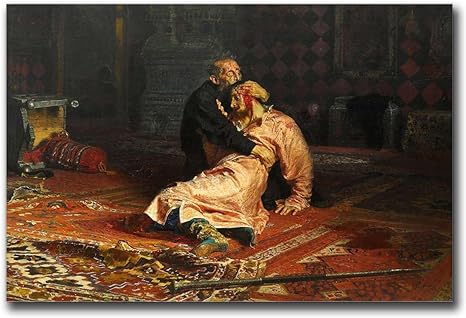Tsar Ivan the Terrible
Tsar Ivan the Terrible, a name that echoes through the corridors of Russian history with a mixture of fear and fascination. Ivan IV, the first Tsar of Russia, earned the epithet “the Terrible,” not merely for gratuitous cruelty but for his complex and often controversial reign.

Early Life and Ascension: Born in 1530, Ivan IV inherited the throne at the tender age of three after the death of his father, Grand Prince Vasily III. His early years were marked by political turbulence, with rival factions vying for power. At sixteen, Ivan was officially crowned the first Tsar of Russia, ushering in a new era of centralized rule.
The Reign of Terror: Ivan’s reign is notorious for its harsh policies, purges, and acts of extreme violence. His temper earned him the moniker “the Terrible,” yet historians contend that the term may not entirely capture the complexity of his rule. Ivan’s Oprichnina, a period of state-sponsored terror, saw the establishment of a secret police force that carried out brutal purges, leading to the deaths of thousands. The infamous incident of the Massacre of Novgorod in 1570 remains a dark stain on Ivan’s legacy.
Architect of Russia’s Expansion: Despite the darker aspects of his rule, Ivan the Terrible also left an indelible mark on Russia’s territorial expansion. He annexed vast territories, including the conquest of the Khanates of Kazan and Astrakhan, effectively expanding the Russian state to its present-day boundaries. Ivan’s military campaigns laid the foundation for the Russian Empire’s future growth.
Legacy and Impact: The legacy of Tsar Ivan the Terrible is a tapestry of contradictions. His reign saw the codification of laws in the Sudebnik of 1550 and the establishment of the Moscow Print Yard, contributing to the development of Russian culture. Ivan’s patronage of the arts and architecture led to the construction of the magnificent St. Basil’s Cathedral on Moscow’s Red Square.
Tsar Ivan the Terrible remains a figure shrouded in historical ambiguity. While his reign was marked by both ruthless tyranny and transformative achievements, it is essential to approach the narrative with nuance. The epithet “the Terrible” serves as a reminder of the complexities inherent in leadership and the challenges faced by rulers in tumultuous times. Ivan IV’s legacy is a testament to the multifaceted nature of history, where even the most formidable leaders defy easy categorization.

